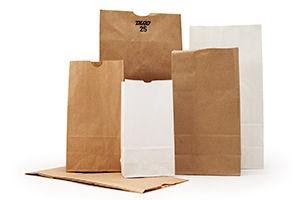The decision on whether retailers should buy paper grocery bags is today hinged on its environmental impacts. This leads to the fundamental question, what is the carbon footprint of these bags?
Globally, there has been a shift in how businesses make their operational decisions as more focus is placed on environmental sustainability. Today, everyone who is in business is expected to play a role in helping to keep the environment safer and cleaner. This has been the aftermath of the decades of unregulated business operations that resulted in polluted cities, litter everywhere, and an upsurge in global warming. These negative effects have led to a unanimous call for businesses to re-think and adapt better operational measures. All this must be done with the goal of a better tomorrow as the world recovers from decades of over pollution.
As more businesses seek ways to embrace environmentally conscious business practices, there has been a need for debates on some crucial aspects. One of the most critical areas that have been an area of great conflict is whether retailers and consumers should use plastic or paper bags. Primarily, this has been driven by the fact that people litter the environment with these bags, and a clear solution is required. While it is consumers who have the mandate of ensuring they dispose of these bags in the right manner, retailers and businesses have a duty to steer the vehicle in the right direction. This is because it is businesses that ultimately determine what is readily available to consumers, which then dictates their behavior.
Plastic Grocery Bags versus Paper Grocery Bags
For long, plastic grocery bags have been the retail industry’s darling, thanks to their great usability. However, questions about their carbon footprint and the fact that most litter is plastic have led to many questions about their environmental sustainability. On the other hand, most retail stores and businesses are opting to buy paper grocery bags as it is considered to be more environmentally friendly. Nevertheless, these general statistics about paper grocery bags do not reveal the actual picture. A side by side comparison of these two types of bags shows that;
- In general, a paper grocery bag has a higher carbon footprint than a plastic grocery bag. This comes from the original production process as it requires at least eight trees to produce 100,000 sheets of paper. This process requires 2,000kWh of energy that is much more energy than is needed to manufacture a plastic bag. Because of this resource-intensive production process, paper grocery bags are rated to have a higher carbon footprint than plastic grocery bags. The high carbon footprint comes from the waste produced from the production process, which requires proper waste management.
- The carbon footprint of grocery paper bags is significantly reduced when they are recycled. This is the best aspect of paper bags that most retailers and consumers must fully utilize. The value of recycled grocery paper bags is that it brings out the full benefits of these products whose primary source is trees. It becomes better considering that paper is widely recyclable, and retailers can easily invest in recycled paper bags, reducing the need to cut down trees continually.
- Even when disposed of, paper bags decompose faster than plastic bags. At the mention of paper grocery bags, the first thing that comes to mind is that they decompose rapidly. This has been the foundational basis for most of the states that have banned plastic bags. Studies show that plastic bags take between 400 and 1,000 years to decompose, which is a long time to have an item in a landfill. However, this can be countered through timely recycling and strict rules on where to dispose of plastic. An example is Canada that has developed an efficient system of recycling plastic bags that has led to a reduction in waste.
- Paper grocery bags are considered greener as they are natural-based products that are highly beneficial when used efficiently. Nevertheless, this does not eliminate the fact that if they are not reused and recycled, they will still adversely impact the environment. On the other hand, since plastic grocery bags do not come from trees, they are typically not considered eco-friendly. However, similar to paper bags, they do not cause as much pollution when they are reused and recycled.
Bottom-line
The debate on whether retailers should buy paper grocery bags or plastic grocery bags is not one that will fade off any time soon. There are benefits to each type of packaging material, but the rubber meets the road when it comes to reusing the bags and recyclability. In particular, paper bags are loved for the fact that they tend to score higher in these aspects and that they are natural products. However, to reduce the environmental impacts of using these bags, it is important for everyone to find ways to reuse these products as much as possible. It is only in doing this that the world will indeed have found a solution against the problem of single-use bags that are disposed of everywhere.









